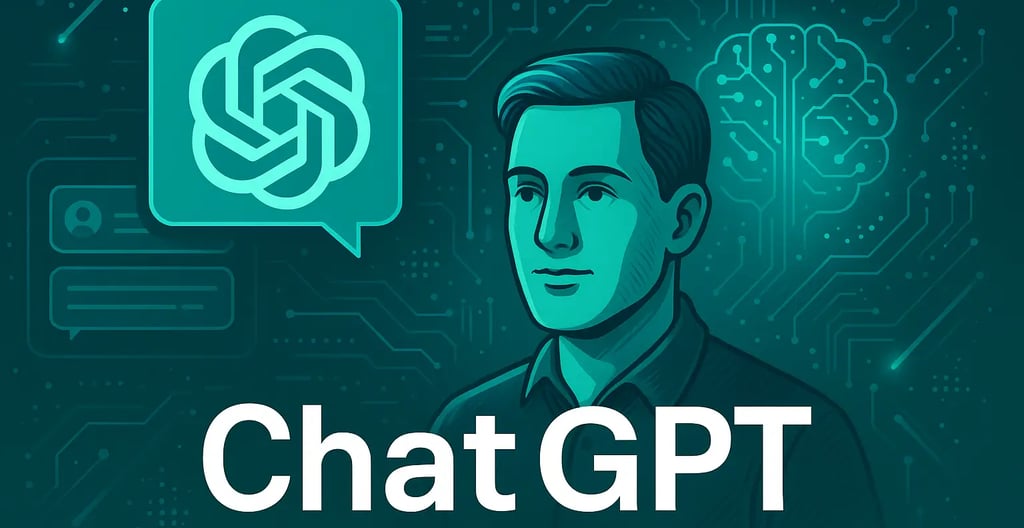The Evolution of ChatGPT: Origins, Technology, and Future Prospects of Conversational AI
Discover how ChatGPT was created, how it works, and where it's headed. Explore its architecture, key milestones, industry applications, and ethical considerations in AI development.


What Is ChatGPT? A New Era of Conversational AI
ChatGPT is a cutting-edge AI language model developed by OpenAI, designed to simulate human-like conversation using deep learning techniques. Its roots trace back to major advancements in natural language processing (NLP) and the development of the transformer architecture, introduced by Vaswani et al. in 2017. This architecture allowed AI to better understand linguistic context, revolutionizing how machines process and generate human language.
OpenAI capitalized on this technology by introducing Generative Pre-trained Transformers (GPT), with ChatGPT being one of the most successful iterations. It was built to facilitate meaningful human-machine interactions across various domains—from customer support to education and content creation—by generating relevant, context-aware, and coherent responses.
How ChatGPT Works: The Technology Behind the Model
ChatGPT is powered by OpenAI's GPT architecture, which uses a deep learning technique known as transformers. These neural networks analyze patterns in large datasets to understand and generate language. Here’s how it works:
1. Pre-training and Fine-tuning
Pre-training involves exposing the model to massive text datasets from books, websites, and online articles.
Fine-tuning customizes the model for specific tasks, such as customer interaction, technical support, or creative writing.
2. Contextual Understanding
Unlike earlier models, ChatGPT can consider context within a conversation. This enables it to generate more relevant and fluid responses.
3. Dynamic Response Generation
When a user inputs a prompt, the model uses its trained parameters to predict and construct a response. It mimics human-like dialogue by predicting the most likely sequence of words.
This architecture allows ChatGPT to function in real-world applications—such as virtual assistants, chatbots, tutoring systems, and more.
Key Milestones in ChatGPT’s Development
The journey of ChatGPT is marked by continuous innovation, with each iteration improving the model's capabilities and ethical robustness:
1. GPT-2 and GPT-3 Breakthroughs
GPT-2 demonstrated text generation capabilities that closely resembled human writing.
GPT-3 increased model size and training data, delivering significantly more coherent and versatile responses.
2. ChatGPT Launch
Introduced in late 2022, ChatGPT made AI conversations mainstream, blending user-friendly interaction with powerful AI language understanding.
3. Ongoing Improvements
Regular updates have reduced biases, improved safety, and enhanced its multilingual and domain-specific performance.
These milestones highlight the importance of balancing performance with ethical responsibility, including bias mitigation and misinformation control.
Applications of ChatGPT in Real-World Industries
ChatGPT is transforming multiple industries by providing scalable, intelligent, and automated conversational tools:
1. Healthcare
Assists in diagnosing through symptom analysis
Enhances patient support and communication
Streamlines record management via voice-to-text features
2. Education
Delivers personalized tutoring and homework help
Provides explanations in natural language for complex concepts
Supports language learning and exam preparation
3. Customer Support
Powers chatbots to resolve queries 24/7
Reduces wait times and improves customer experience
Automates ticket classification and escalation
4. Content Creation
Generates articles, summaries, emails, and product descriptions
Assists in SEO writing and brainstorming
Enables marketers to streamline copywriting processes
The Future of ChatGPT: Opportunities and Ethical Considerations
As conversational AI evolves, ChatGPT is poised to lead in areas such as intelligent automation, accessibility, and human-computer collaboration.
Emerging Trends
Voice integration with smart assistants
Hyper-personalization in education and e-commerce
AI-driven diagnostics in medical applications
Ethical Challenges
Ensuring data privacy and algorithmic transparency
Preventing the spread of misinformation
Addressing concerns about job displacement and digital equity
Future iterations of ChatGPT will likely involve stronger governance models, transparency in AI decisions, and a focus on inclusive design that benefits global communities.
